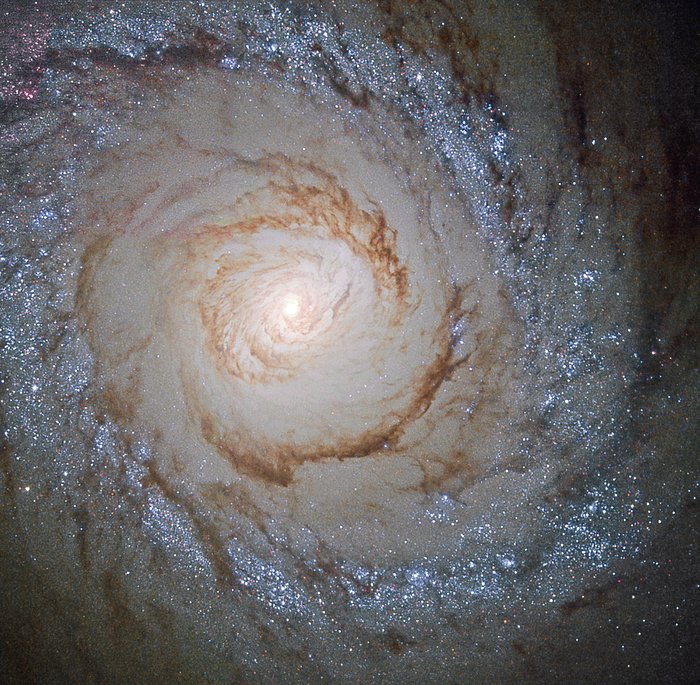Teach This Poem is a weekly series featuring a poem from our online poetry collection, accompanied by interdisciplinary resources and activities designed to help K-12 teachers quickly and easily bring poetry into the classroom.
Featured Poem
Starburst Galaxy Messier 94

Taken by the Hubble Space Telescope. Photo credit: ESA/Hubble & NASA.
Classroom Activities
- Warm-up: Ask your students to think about what they imagine life might be like (if there were any) in another galaxy. Ask them to write a brief description of what they imagine and share it with a partner.
- Show your students the photograph of Messier 94, a nearby galaxy that was photographed using the Hubble Space Telescope. Ask them to gather in small groups to write down the details they notice in the photo, other than the colors (which are not accurate). Then, ask them to read the image's caption, writing down the information that interests them. (To explore more about this galaxy, consider co-teaching this lesson with a science colleague.)
- Project Ruth Stone’s poem “In the Next Galaxy” in front of the class. Ask your students to read the poem silently and write down the words and phrases that jump out at them. Ask one student to read the poem aloud to the class while the listening students add more words and phrases to their lists. Ask another student to read the poem aloud, repeating the process for the listening students. Ask your students to write down any questions they might have.
- Whole-class discussion:
a) What can we learn about a nearby galaxy from astronomers and the Hubble Space Telescope? Make sure you give examples from what you noticed and read as evidence. Then, compare this to what you imagined life might be like in a nearby galaxy.
b) What does the speaker in the poem imagine in her galaxy? Give examples from what you have written down. How does the speaker’s vision compare to yours? To the astronomer’s? - Ask your students to describe their imagined galaxy in a paragraph or poem. You can also ask them to illustrate it, if appropriate.
- Display their writings and illustrations and do a gallery walk, where students can discuss one another’s work.
